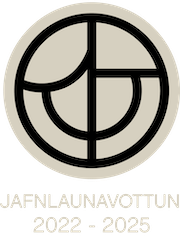RYK- Uppblástur ryks og dreifing þess frá Íslandi - verkefni lokið
Fréttatilkynning verkefnisstjóra
Fylgst var með rykframleiðslu á nokkrum af helstu náttúrulegu rykuppsprettum landsins og tekin þar sýni. Einnig voru tekin sýni af loftbornum rykögnum á nokkrum stöðum á landinu.
Eðlis- og efnaþættir voru greindir í sýnunum í samstarfi við alþjóðlega samstarfsaðila. Styrkur rykefna (rykmengun, PM) var mældur á mörgum mismunandi stöðum í rykstormum. Ennfremur voru líkön notuð til að reikna rykframleiðslu og dreifingu ryks frá landinu. Rannsóknirnar staðfesta að rykframleiðsla á Íslandi er gríðarlega mikil (5-50 milljón tonn á ári) á hnattrænum mælikvarða. Rykmengun fer oft yfir viðtekin heilsuverndarmörk, jafnvel í >100 km fjarlægð frá upptökunum. Rykið hefur víðtæk áhrif á marga þætti umhverfisins. Rykið berst langar vegalengdir (jafnvel þúsundir km) og fannst m.a. á Svalbarða og í Suðaustur-Evrópu, sem sýnir möguleg áhrif íslensks ryks langt inn á heimskautasvæðin og út yfir hafsvæðin kringum Ísland. Rannsóknirnar sýna að dökkur litur kornanna gleypir sólarljós og eykur á loftslagshlýnun á heimskautasvæðum. Kornin hafa áhrif á skýjamundun andrúmsloftsins. Kornin hafa áhrif á bráðnun snævar og jökuls á Íslandi og líklega á jöklum utan Íslands. Rykið er annars eðlis en ryk frá öðrum meginuppsprettum heimsins eins og Sahara. Það er fínkornóttara, sem eykur veðrunarhraða en einnig neikvæð heilsuáhrif. Unnið er að því að koma framleiðslu ryks í alþjóðleg veðurspárlíkön og „rykviðvörunarkerfi“ Alþjóðlegu Veðurstofnunarinnar (World Meteorological Organization, WMO). Áfok ryks hefur ráðandi áhrif á íslensk vistkerfi og rannsóknirnar varpa ljósi á eðli þessa uppfoks. Járnríkt basaltrykið hefur líklega áhrif á frjósemi hafsvæðanna umhverfis Ísland.
English:
Dust emissions were monitored
from major dust sources in Iceland and the source areas surveyed and sampled.
Air-borne dust was sampled at several locations. Samples were analyzed for
physical, chemical and mineralogical properties in collaboration with
international co-operators. Dust concentrations were measured in multiple
locations during ongoing dust storms. Dust emissions were modelled and the
impact on various atmospheric factors was investigated. We have confirmed that
dust emissions from Iceland are vast on a global scale (5-40 million tons
annually) with a wide range of implications. Dust emissions often exceed health
limits, even >100 km from the sources. Dust is carried long distances and
was confirmed in Svalbard and Southeastern Europe during the project. The dark
complexion with low albedo enhances climatic effects of Icelandic dust,
furthering the effect of climate change, and the dust affects snow and glacial
melt in Iceland and most likely in the Arctic. Our research shows that the
Icelandic dust is finer than crustal dust (Sahara etc.) which has more
potential consequences for human health. The results have ensured that
Icelandic dust will be incorporated into global dust prediction models and
active warning systems (World Meteorological Organization). The high rate of
dust deposition in Iceland and its nature has a controlling effect on Icelandic
ecosystems, and the results have shown the nature of this aeolian deposition (Icelandic: áfok). High deposition
rates on oceans and iron rich chemistry is likely to enhance fertility of
oceans around Iceland.
Outputs - overview
14 published and submitted peer-reviewed
journal articles with IRF contribution noted. Open Access when RYK participants
were first authors of papers and in some others.
6 peer-reviewed papers at various stages towards completion that will be submitted during the next months.
2 of the submitted papers are in Icelandic in Náttúrufræðingurinn, outreach to Icelandic readers.
4 additional peer-reviewed papers without IRF acknowledgement (for various reasons).
39 presentations at 23 international conferences in 11 countries.
Knowledge gained during the project was used to write a significant contribution to the UNESCO World Heritage application for Vatnajökull National Park.
Establishment
of the Icelandic Aerosol and Dust Association (established during the
RYK project)
Establishment of an active webpage (https://icedustblog.wordpress.com/about/) led by Pavla Dagsson-Waldhauserová,
RYK hosted two international workshops in Iceland (https://icedustblog.wordpress.com/past-events/).
Heiti verkefnis: RYK- Uppblástur ryks og
dreifing þess frá Íslandi / RYK- Dust production and
distribution in Iceland
Verkefnisstjóri: Ólafur Arnalds, LBHÍ
Tegund styrks: Verkefnisstyrkur
Styrktímabil: 2015-2017
Fjárhæð styrks: 29,877 millj. kr. alls
Tilvísunarnúmer Rannís: 152248


